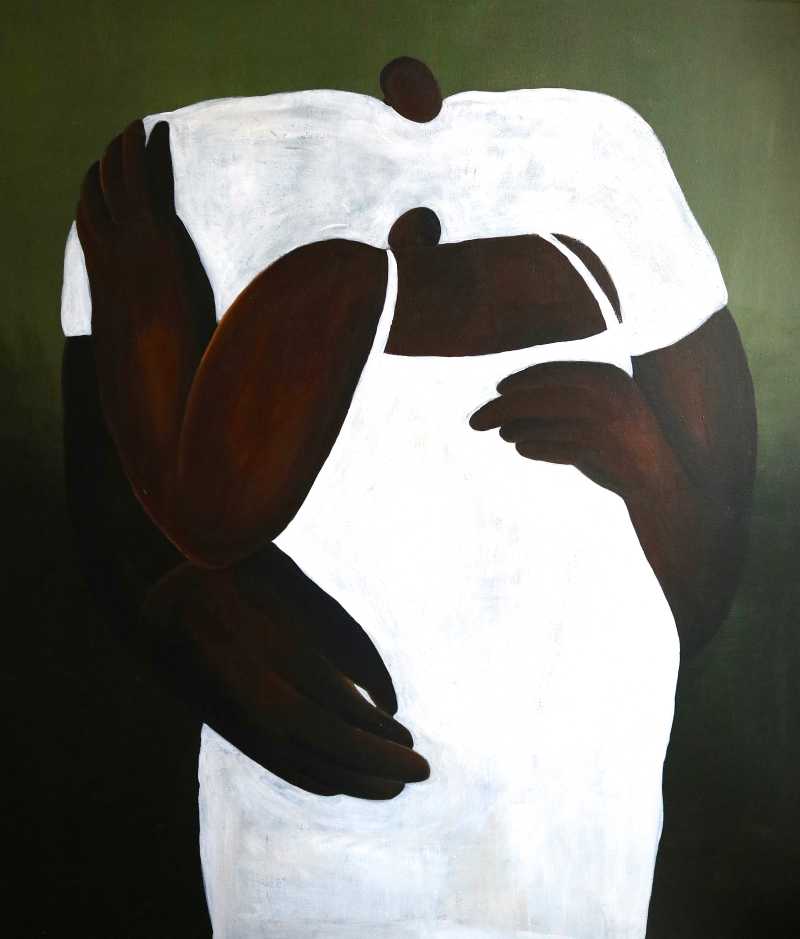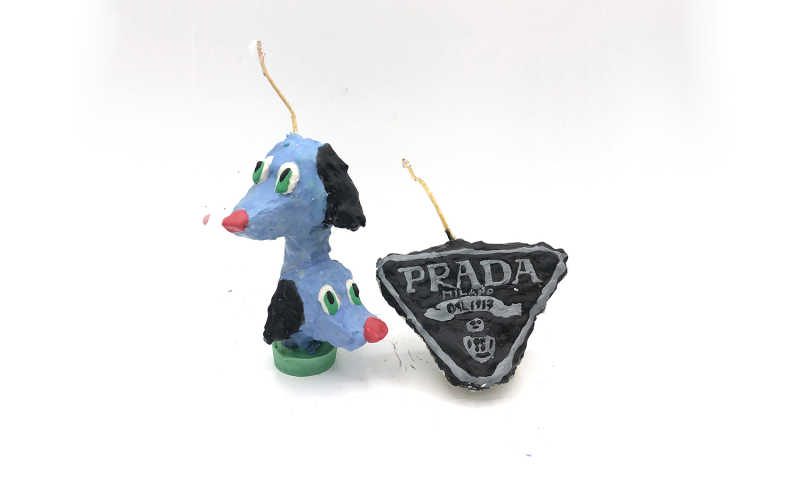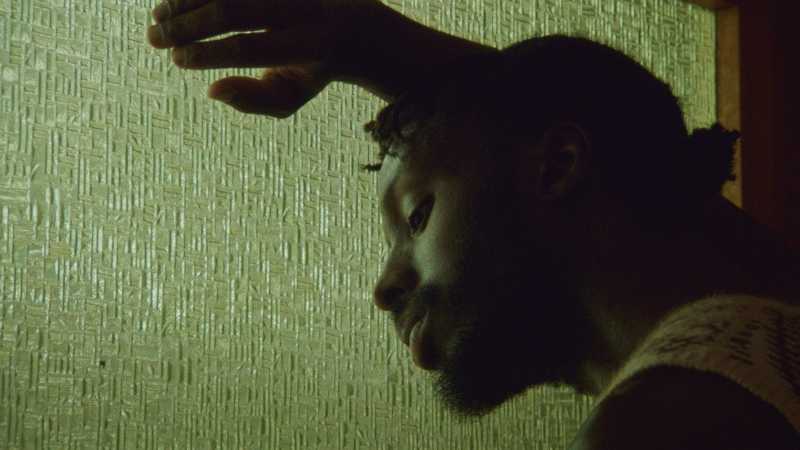Q: Could you introduce yourselves a little bit. What’s your story, as individuals, but also how did you meet and begin this collaboration?
Neil: Michael and I met at the University of Manitoba in the mid 1990’s where we were both fine art students. In 1996, we helped found an art collective called the Royal Art Lodge. Our current collaboration is a continuation of the work we did in the collective. My own story is that I grew up on a farm, and most of my interests relate to music.
Michael: Yes. Neil is right about where and when we met. I was born in Winnipeg and stayed here. I am married and I have two children.
Q: What are your main mediums?
Neil: We mainly use acrylic paint and paint on mdf boards. Michael has been using spray paint a bit recently, and we have been doing some small print editions.
Michael: We started off drawing together and over the years it has moved primarily to painting. Our solo work is quite different. Neil makes really intensely layered paintings and I mostly make sculpture these days.
Q: Did you ever consider doing anything else aside from art?
Neil: You mean for a living? I never thought I would be able to make any money selling art until it started to happen. I would probably be buying and selling collectibles if I wasn’t making art.
Michael: I assumed I would have to teach or do some kind of design work, but I never went to grad school so teaching is out. Fortunately, Winnipeg is relatively affordable and we’ve been lucky to sometimes sell things. If I did something other than art full time, I imagine myself working the night shift baking bread.
Q: How would you describe the style of your work?
Neil: The paintings I make by myself are almost abstract, and full of information. The paintings Michael and I make together focus a lot on writing and matching writing with imagery.
Michael: Our work often has the appearance of illustration. We want to create a lot of imagery quickly, and that’s what it ends up looking like when we work that way. We draw from books a lot too, which also influences the style. The images serve as the basis for our writing and so the painting itself has become secondary these days. In my own work I avoid language and I reduce things as much as possible. I guess that makes it minimal, but there’s usually some emotional content.
Q: What is your creative process for creating a work? Are there lots of iterations, or is it more just a visceral process, where you make it once and stick with it?
Neil: Most of the time our paintings are small and simple, so most of the reworking is in the wording involved. We also never finish a lot of the paintings that we start.
Michael: We also work a lot in series. If we find an image that can be used in a lot of different ways, we’ll paint that for a while. The Flower series is a good example. I’ll paint a flower or a group of flowers and we’ll look at it to see what it might suggest to us. The flower might look a certain way, or be relating to others in a certain way. We’ll write a text on the painting to go with that feeling. Library and Animals with Sharpies are a couple other series we’ve worked on---Essentially these are formulas or set-ups for facilitating writing.
Q: What is it like working collaboratively?
Neil: It’s a productive social activity. In our collaboration there is a lot of listening to and talking about music.
Michael: We’ve been working together for over 20 years now. At this point we’ve kind of figured it out. It’s much easier to collaborate as a duo than when we were a larger group. The larger the group the more you have to let go. Letting go is good, but you sacrifice focus.
Q: Can you explain “Personal Messages”?
Michael: Personal Messages is an edition we made which consists of 15 small printed cards in an envelope. Each card has a typed message. The messages are intended for romance or friendship. Ideally they would be given out in a respectful manner to someone you are fond of. Although, some people have interpreted them as self-affirming---giving them to themselves. There are two volumes so far.
Neil: We also have a blog called “Personal Message” where we post paintings and sometimes prints from an ongoing series we have called “typing” which shows a girl typing messages. We will also post info on our shows, or new prints, or anything else.
Q: How do you come up with the quotes on your pieces?
Neil: I write down anything I think of that seems interesting. We have a bunch of different projects that use the writing. Sometimes I use what I’ve written and sometimes Michael and I will work up a piece of writing based on a concept.
Q: How would you describe the tone of the quotes in your pieces? I feel like your works all have a distinct tone and style. To me, the wording is very matter of fact yet creative at the same time. For example, “drops” there’s a piece that says “0.05mL of Human Sadness” or, “Is a flower still a flower without its flower?” I feel that you subtly play with words in so many of your pieces.
Neil: It’s just lots of thinking, and writing. I think we tend toward dark humor or more recently maybe sentimentality. A lot of what we do when we work together on the writing is trying to get an idea across as simple and clear as possible.
Michael: Yes. A lot of what is written these days could be seen as unironic self-help/affirmations, but it is usually balanced with our use of bad jokes and puns, and the more depressing stuff we do.
Q: You have a lot of pieces where the quote is painted as if it’s the title of a book cover. What’s the intentionality behind these works?
Neil: These are a series of paintings called “Library” where we imagine book titles. We’ve been working on this series for many years and there are thousands of paintings at this point. It’s a good place to put ideas that don’t seem to fit anywhere else, and it’s also proven a good way to generate ideas for other projects.
Michael: When we exhibit these Library paintings, they are shown in grids, sometimes made up of thousands of individual panels.
Q: Some of your pieces are shot where a thumb or part of a hand is visible holding the pieces. This gives a sense of scale— that many of your pieces are small. Why do you choose this scale for your works?
Neil: We work at a table, and we like to work on lots of paintings at the same time and to work quickly. We do make large works, but they are generally made of many small paintings.
Michael: The small scale seems to help for generating ideas quickly without worrying about the preciousness of a large canvas. Occasionally, we will remake something at a larger scale.
Also, we live in the middle of nowhere in Canada, so shipping small works is much less of a hassle.
Q: What’s the best way to experience your work? I’m sure many people view it just digitally, but is there intention for people to see it in person, to hold it, to see it in a gallery setting? Would that change the way the viewer experiences the work?
Neil: The work is made for shows we have in art galleries, but it translates well for viewing on the internet.
Michael: Our work is flat and simple enough that it translates well to print. I like books. I think the series and composite works, especially Library, are better seen in an exhibition, when you can see how they all relate to each other, and overwhelm.
Q: Where/who do you draw your inspiration from?
Neil: Anywhere/anything.
Michael: Books, music, other artists, friends... Hard to be more specific than that.
Q: What do you hope people take away from your art?
Neil: I hope that people understand the paintings that I want them to understand.







